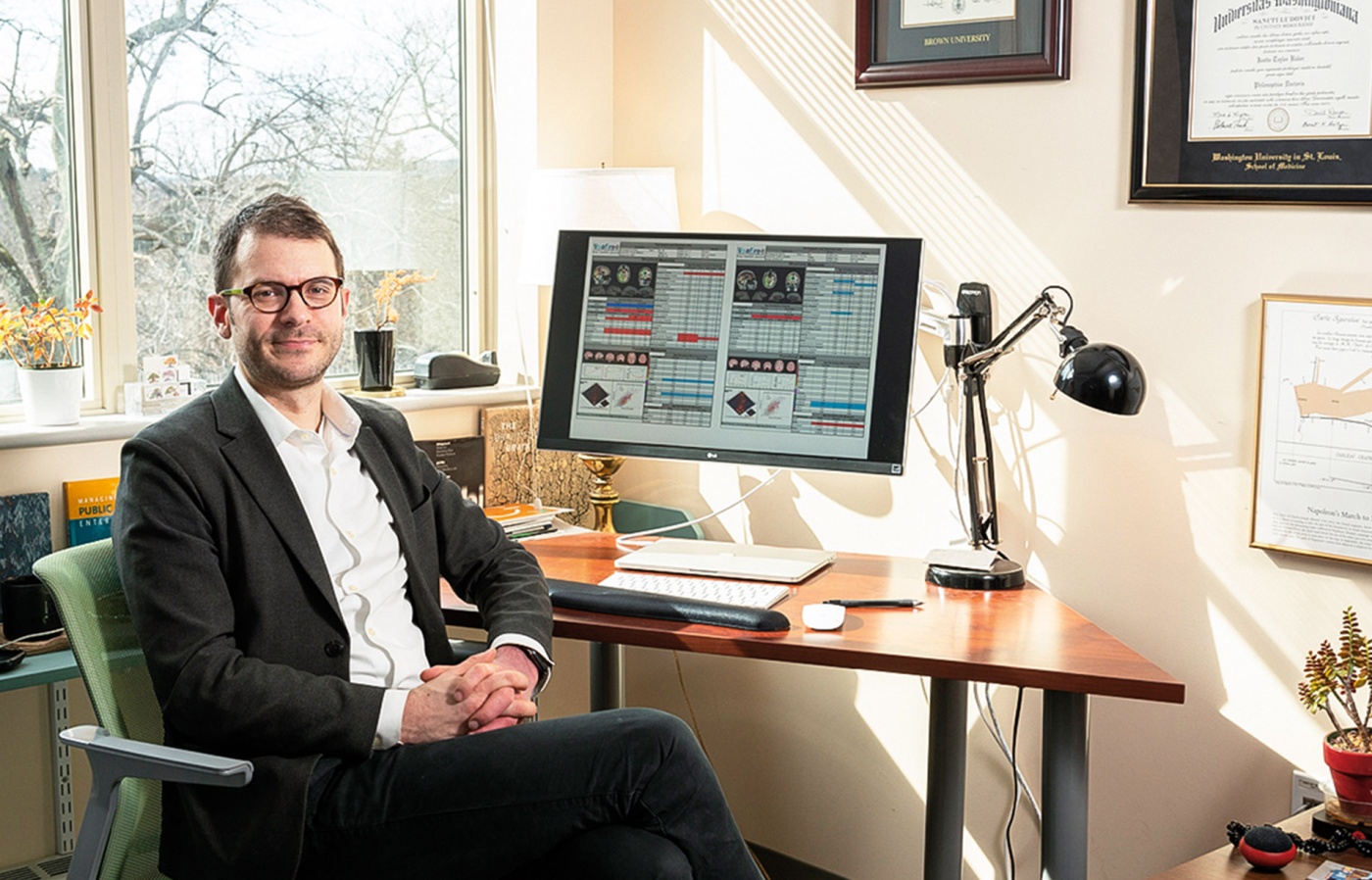When a patient shows up at an ER in the middle of a psychotic episode, is it schizophrenia, bipolar disorder, another condition? A brain imaging assessment technique developed by Justin Baker ’97, cofounder and scientific director of the McLean Institute for Technology in Psychiatry (ITP), could help doctors make an accurate diagnosis. “In many cases, you only have a vague or unreliable history,” Baker says. “A brain test to distinguish between these similar presentations is the kind of thing we’ve all been looking for.”
Baker grew up outside Atlanta, where his mother was a psychologist and his father a doctor at the Centers for Disease Control. He studied neuroscience at Brown, imaging neurons in the lab of Professor John Donoghue, and continued his research at Washington University in St. Louis, analyzing brain patterns of monkeys during movement. Training the animals took months, however, and so Baker became interested in whether insights could be gleaned from brain scans at a resting state. He found that patients with a history of psychosis displayed a sort of cross-wiring in the frontal parietal control network, which presented differently for schizophrenia and bipolar disorder. He is now investigating whether the technique could help diagnose patients earlier and better differentiate between the two conditions—important in developing effective treatments.
More recently, he has worked to develop a smartphone app to track patients’ sleep, eating, and movement patterns, along with collecting regular audio diaries, to provide insight into the progress of conditions over time. In a recent study of nearly 100 people, Baker and colleagues tracked changes in sleep and movement patterns that could help alert doctors to the onset of depression, as well as analysis of speech that can signal disorganized thinking. “This kind of measurement could be used for detection of issues signaling someone needs to go to the hospital—or a way to confirm that someone’s safe to come off their medications,” Baker says. “Either way, it could transform the kind of treatment we can provide.”





